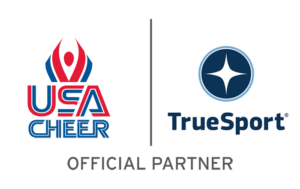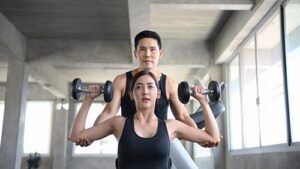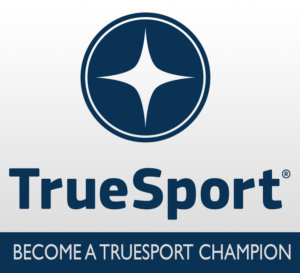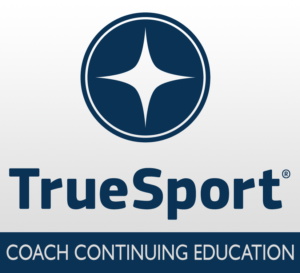Practical Ways to Prevent Injury in Specific Sports
USA Cheer has partnered with TrueSport, to provide new educational tools to equip coaches, parents and young athletes with the resources to build life skills and core values for success in sports and in life. TrueSport, a movement by the U.S. Anti-Doping Agency, inspires athletes, coaches, parents, and administrators to change the culture of youth sport through active engagement and thoughtful curriculum based on cornerstone lessons of sportsmanship, character-building, and clean and healthy performance, while also creating leaders across communities through sport.

Practical Ways to Prevent Injury in Specific Sports
 Being an athlete comes with a certain element of risk: Some sports are more injury-prone than others, but any athlete can potentially develop an acute or chronic injury. Many injuries are preventable, though.
Being an athlete comes with a certain element of risk: Some sports are more injury-prone than others, but any athlete can potentially develop an acute or chronic injury. Many injuries are preventable, though.
Here, Dr. Michele LaBotz, a TrueSport Expert and sports medicine physician, explains how you can be your own greatest advocate when it comes to early injury detection as well as injury prevention.
Your Injury Risk Increases After Injury
You read that right: LaBotz points out that your biggest risk for injury is having a prior injury. If you do have a prior injury, it’s important to ask yourself (or a coach or athletic trainer) if you’re doing everything you can to rehabilitate the injury and to prevent it from recurring. Often, we get so excited to return to play that we neglect the physical therapy exercises we were given, or we ignore recovery advice in hopes of getting back to our previous level of play faster. But a slow and thoughtful return to sport after injury will better set you up for success and help avoid another injury from occurring.
Your Injury Risk Increases During Growth Spurts
 As an athlete who may still be growing, it’s important to understand that during and after a growth spurt, you may be more prone to injury. “Injury risk goes up around the time of peak growth. When an athlete is growing fast, their proportions change, and that can lead to a lack of coordination” LaBotz says. “Oftentimes, during these periods of growth, an athlete will temporarily lose their sports skills, so then they train even harder because they want to get the skills back. But really, what they need to do is step back and focus on the fundamentals, build strength, build endurance, and build power. The sport specific skill is going to come back, but if you push too hard, you will likely end up injured.”
As an athlete who may still be growing, it’s important to understand that during and after a growth spurt, you may be more prone to injury. “Injury risk goes up around the time of peak growth. When an athlete is growing fast, their proportions change, and that can lead to a lack of coordination” LaBotz says. “Oftentimes, during these periods of growth, an athlete will temporarily lose their sports skills, so then they train even harder because they want to get the skills back. But really, what they need to do is step back and focus on the fundamentals, build strength, build endurance, and build power. The sport specific skill is going to come back, but if you push too hard, you will likely end up injured.”
Your Injury Risk Increases If You’re Trying to Lose Weight
Some sports have weight classes and you may be encouraged to drop to a lower weight category if you fall at the low end of the one you’re currently in. Many sports don’t have weight classes, but do have a stereotypical ‘ideal’ body type that a coach may be promoting. Whatever the case, we know that young athletes often feel pressure to drop weight or maintain a certain body type for their sport. Underfueling and overtraining in pursuit of weight loss can make you more prone to almost every injury, from stress fractures to overuse injuries.
Here are a few sport-specific injury prevention strategies for sports that tend to have high injury rates:
Running
 Running can cause injuries, but there are ways to prevent many of them, from stress fractures to overuse injuries. In running, your goal should be to prevent stress fractures—or at least, catch them early. It can be tempting to not want to tell your coach or trainer about a pain you’re having in your shin whenever you run, but the earlier you can catch and diagnose a stress fracture, the faster you’ll be able to heal. (Tip: An early stress fracture usually hurts toward the end of a run, but not when you’re standing still. It will also typically feel like it’s coming from one specific place rather than a larger area.)
Running can cause injuries, but there are ways to prevent many of them, from stress fractures to overuse injuries. In running, your goal should be to prevent stress fractures—or at least, catch them early. It can be tempting to not want to tell your coach or trainer about a pain you’re having in your shin whenever you run, but the earlier you can catch and diagnose a stress fracture, the faster you’ll be able to heal. (Tip: An early stress fracture usually hurts toward the end of a run, but not when you’re standing still. It will also typically feel like it’s coming from one specific place rather than a larger area.)
You can also protect yourself against overuse injuries and even help prevent some acute injuries by adding variety to your workouts, including things like strength training in addition to running during practice. Understand the importance of proper recovery as well as good nutrition basics—ask your coach to bring a registered dietitian or athletic trainer to speak to your team about these topics if they haven’t already!
Weightlifting
Weightlifting is a great way to prevent injury. However, when weightlifting is your primary sport, focusing on lifting heavier and heavier loads can cause injuries.
 “First of all, it’s important to understand correct technique, and maintain that correct technique even when you are training hard,” says LaBotz. “We see this all the time: the technique breaks down when you’re on the last rep or the last set, and that’s where injuries can occur.”
“First of all, it’s important to understand correct technique, and maintain that correct technique even when you are training hard,” says LaBotz. “We see this all the time: the technique breaks down when you’re on the last rep or the last set, and that’s where injuries can occur.”
You may also be focusing on training a specific muscle group, like your pecs or quads. This can prove to be problematic if you’re not strength training the opposing muscle groups as well. “I see young male athletes trying to build their chest muscles, and they ignore their shoulders and upper back,” says LaBotz. “The same is true for training the quads but neglecting the hamstrings.”
Make sure that your weight training program balances out your muscle groups, otherwise you’re opening yourself up to injuries now and more problems later. It’s also important to keep core work consistent—a strong core can prevent many of the common injuries those who weightlift tend to experience.
Contact Sports
Contact sports may be purposeful, like wrestling, or may simply be sports that often end up with bodily contact made, like soccer or hockey. To prevent injury in these sports, start by understanding what the rules and regulations are in your sport when it comes to contact, and ask your coach to create a set of guidelines for practice as well as in competition that keeps dangerous contact to a minimum.
If your sport includes protective gear, make sure yours fits correctly. If you recently hit a growth spurt, you may need new pads—poorly fitting pads won’t help you, says LaBotz. Always let a coach know if you don’t feel like your practice setup is safe, whether it’s rule- or equipment-based.
As with running, adding strength training and mobility work to your routine can also be helpful when it comes to injury prevention, says LaBotz. If you’re not sure what type of gym work to do, ask your athletic trainer to help you create a routine designed to reduce your injury risk.
Lastly, remember that if you’re an adaptive athlete (if you’re in a wheelchair or use another adaptive device), you may be prone to other types of injuries. For instance, wheelchair athletes tend to end up with upper extremity stress fractures, so pay attention to injury signs!
Takeaway
As athletes, you’re at a risk of injury from your sport. However, there are steps that you can take–and that you can encourage your coach and your teammates to consider—that will make you less prone to injury. Ensure that you take the time you need for recovery, engage in a variety of different movement practices, and get help for small issues before they become big problems.
What is TrueSport?
The TrueSport Champion Network is a community of coaches, parents, program directors, and athletes who believe in the power of youth sport to build life skills and core values for success both on and off the field. Join TrueSport Champion Network to help promote the positive values of cheer, dance, and STUNT!
The TrueSport Coaching Education Program empowers coaches—the most significant influencers in young athletes’ lives—with a transformative learning opportunity to obtain the knowledge and resources to cultivate, champion, and uphold the rich promise and highest potential of sport.
Additional Training Modules from TrueSport
USA Cheer is proud to partner with USADA’s TrueSport® to bring relevant educational content to the Cheer and STUNT community in order to promote a positive youth sport experience. We are excited to provide access to TrueSport’s experts that take coaching beyond skills and help truly develop the overall athlete by building life skills and core values for success on and off the mat, sideline, field, and court.
Feel free to share these resources with your coaching staff, parents, or athletes!
About TrueSport
TrueSport®, a movement powered by the experience and values of the U.S. Anti-Doping Agency, champions the positive values and life lessons learned through youth sport. TrueSport inspires athletes, coaches, parents, and administrators to change the culture of youth sport through active engagement and thoughtful curriculum based on cornerstone lessons of sportsmanship, character-building, and clean and healthy performance, while also creating leaders across communities through sport.
For more expert-driven articles and materials, visit TrueSport’s comprehensive library of resources.
This content was reproduced in partnership with TrueSport. Any content copied or reproduced without TrueSport and the U.S. Anti-Doping Agency’s express written permission would be in violation of our copyright, and subject to legal recourse. To learn more or request permission to reproduce content, click here.



